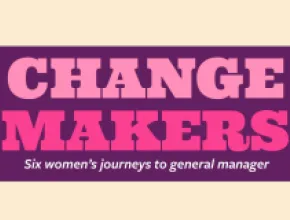Diving headfirst into the world of virtual meetings can be quite a challenge, as meeting planners need to familiarize themselves with a whole new universe of terminology, figure out what the best solution is for their organization and make sure the experience doesn’t result in a hefty price tag.
According to a spring 2011 survey of marketers by virtual events company Unisfair (www.unisfair.com), 60 percent of respondents said they planned to increase spending on virtual environments and events, and 67 percent contemplated hosting 10 or more virtual events in the 12 months following the survey. Forty-six percent of the respondents said they expect more than 50 percent of corporate events will be physical-virtual hybrid affairs within two years.
While terms such as “webcast,” “webinar” and “hybrid event” may be easy to grasp, what does one make of a “bannercast” or “slidecast?” And is now a good time to commit to this new form of meeting? As with any technology, the learning curve started out fairly steep but has now become manageable for meeting planners from novice to veteran.
“There are a lot of different levels you can get into,” says meetings technology speaker Corbin Ball, of consultancy Corbin Ball Associates (www.corbinball.com). “From bringing in a remote speaker—Skype offers an HD signal, so you don’t have a fuzzy image, an image suitable for projecting on a screen in a big room—so you can get into it at virtually no cost.”
Although the cost may start at next to nothing, it can increase into the hundreds of thousands for a complex meeting using technology such as Sonic Foundry (www.sonicfoundry.com), which could handle, say, a stream into 50 different rooms with a rebroadcast later in the day.
“I think you’d be paying at least $4,000 per room per day for that,” Ball says, “but there are many events where information is so valuable they want to get it out, or sell it, so there are many situations that would warrant that.”
While shelling out 4k per room, per day—or using expensive futuristic equipment such as Telepresence units (which Marriott at Starwood offer)—qualifies as being on the pricey side, the bare-bones version, in the most basic sense, is as cheap as peering into a webcam for a “Live Stream” broadcast. All you need to conquer this technology is a camera, computer and reasonably fast Internet connection.
“These things used to require lots of expertise and lots of equipment, but I have an HD webcam that costs me less than $20 and works just fine,” Ball says. “Right now is sort of this golden period where it’s dawning on people that we have these options out there at a fraction of the costs of similar technologies just a few years ago.
“It could be a conference call—it’s really just about bringing in people from remote places,” Ball continues. “It could be a series of short instant messages, or it could be an immersive reality like Second Life, or webcasting, or Web collaboration with interactive whiteboards with different streams—it means so many different things.”
No matter what one’s definition is, meetings and hospitality industry associations are stepping up to the plate by broadcasting content from their major annual events. HSMAI, for instance, recently broadcasted educational sessions from its annual HSMAI’s MEET National program in Washington, D.C. MPI, PCMA and ASAE have also offered up similar hybrid events
HSMAI partnered with Freeman (www.freemanco.com), virtual events company INXPO (www.inxpo.com) and new marketing company bxbonline (bxbonline.com) to bring the content of its HSMAI’s MEET National show, held Sept. 7 and 8 in Washington, D.C., into a virtual environment called HSMAI’s MEET On (www.hsmaimeeton.com) . On-demand versions of the conference’s educational programming, as well as exhibitor content and contact information, allow planners to earn CEU credits on a variety of subjects.
But even if the cost of entry into the virtual events market is decreasing, along with an increasing simplicity to operate, one big question remains: Will having a virtual event “cannibalize” my face-to-face attendance?
Many think that offering a virtual meeting actually has the potential of increasing the live audience the following year because attendees will experience the value of the content delivered and not want to miss the networking opportunities only a face-to-face meeting can provide.
Tony Lorenz, founder of bXb Online, a marketing agency that specializes in online and hybrid events, makes an analogy with the world of sports, which initially thought broadcasting games would lead to empty stands.
“If you think about that industry pre-broadcast, there were 30,000 to 50,000 people in the stands at the game…and they pushed back on radio and television broadcast,” Lorenz says. “The industry was redefined in that there was a broader scale of content—the game. If we increase the content—our game—then we have a good chance of favorably redefining the event marketing industry.
“The intent is to serve both markets as an extension to their face-to-face experiences and robustly fulfill their business objectives, which are wide-ranging,” he continues. “The stadiums today are as full as they’ve ever been and the prices are 16 times what they were and you pay $16 for a hot dog.”
Lorenz maintains that organizations create more interest in face-to-face experiences by creating an online audience, which drives demand to the live venue.
“There’s a scalable approach to this—you don’t jump in fully,” Lorenz says. “There’s simple streaming to streaming with some interactivity in a very packaged way, and then from there you can go out to multiple-day events with sponsorship opportunities and a live-online build-out. You don’t have to boil the ocean on day one—you can do it little by little.”
No matter what level of sophistication an organization wants to undertake, Lorenz is very bullish that the technology train has left the station when it comes to virtual and hybrid meetings.
“I would encourage the meeting planning community to embrace the category,” he says. “It’s going to become more valuable to the extent that they can understand it and work it into their events. Any face-to-face is going to need to be more measurable and scalable, and this category helps get that done.”
Of course, in the end, experts seem to agree, there are just some things you can’t replicate in the virtual world.
“A virtual meeting will replace face-to-face meetings when virtual honeymoons replace the real thing—it’s just not going to happen,” Ball jokes.
On the Internet: Check out a brief virtual meetings glossary here. [www.virtualedge.org/page/virtual-event-definitions]






